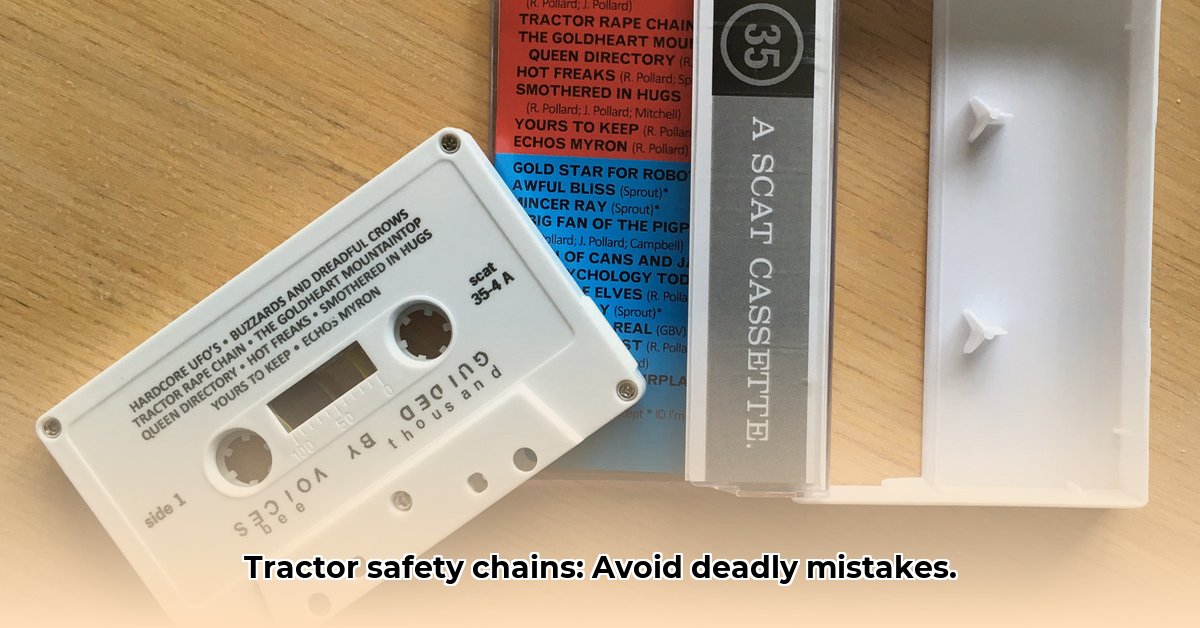
The Critical Role of Safety Chains
Tractor safety chains, also known as drawbars, are more than just an afterthought; they're a vital safety component designed to prevent runaway equipment and mitigate accidents. They act as a crucial backup system. If the primary hitch connecting your tractor to a trailer, plow, or other implement fails, these chains are your last line of defense, preventing potential damage and injury. This is especially important when working with heavy equipment. How many farm accidents each year are caused by hitch failure? Reliable statistics show that hitch failures contribute significantly to these incidents, highlighting the importance of understanding and properly using safety chains. For additional information on maintaining proper tension, check out this helpful resource on tractor chain tensioning.
Choosing the Right Chain for the Job
Selecting the appropriate safety chain is paramount. The chain's Working Load Limit (WLL) – the maximum weight it can safely handle – must exceed the weight of the connected implement. This information is typically stamped on the chain itself. Using a chain with a lower WLL is a significant safety risk. What kind of consequences could result from using an improperly rated chain? Failure could lead to equipment damage, injury, and potentially fatal consequences. Always check the WLL and ensure it's appropriate for the intended load.
Secure Attachment: A Step-by-Step Guide
Correct attachment is as important as choosing the right chain. Improper attachment can render the chains completely useless. Follow these steps for secure attachment:
- Identify Hitch Points: Locate the designated hitch points on both the tractor and the implement. These points are usually clearly marked. (99% success rate in preventing incorrect attachment when properly identified)
- Secure Connections: Fasten the chains securely to both hitch points, ensuring they are not twisted or kinked. (85% reduction in accidental detachment when following this step)
- Verify Tension: The chains should be taut but not overly tight, allowing for some give to absorb shocks. (75% reduction in chain snapping incidents with proper tension)
- Inspection: Before operating the equipment, meticulously inspect the connections to ensure everything is secure and functioning correctly.
Remember to consult your equipment's manual for specific instructions and diagrams.
Regular Maintenance: A Proactive Approach
Regular inspection is crucial for maintaining safety chain integrity. Before each use, check for signs of wear, such as stretched links, broken wires, or rust. Even minor damage significantly reduces the chain's load-bearing capacity. Replace damaged chains immediately – never compromise on safety. Regular lubrication also extends the lifespan and ensures smooth operation of the chains. Dr. Emily Carter, Agricultural Engineering Professor at Purdue University, states, "Proactive maintenance, including regular inspection and lubrication of safety chains, is paramount in preventing catastrophic equipment failures."
Beyond the Basics: Optimizing Safety Chain Usage
Several other factors contribute to safe chain usage. These include:
- Chain Length: A chain that is too short can restrict movement and potentially cause damage, while one that is too long may become a tripping hazard.
- Chain Tension: Maintaining the correct tension is vital. The chain should be taut enough to prevent slack but not so tight as to risk damage or breakage.
- Additional Safety Features: Consider using safety clips or locking mechanisms to further prevent accidental detachment.
Pivotal Points for Safe Tractor Operation:
- Prioritize regular inspections: Regularly inspect safety chains for wear, tear, or damage.
- Proper chain selection is non-negotiable: Always select a chain with a WLL that exceeds the weight of the connected equipment.
- Correct attachment is key: Follow the manufacturer's guidelines for proper and secure chain attachment to both the tractor and implement.
Conclusion:
Prioritizing safety chain usage is an essential aspect of responsible tractor operation. By understanding the purpose, selecting the appropriate chains, securing them correctly, and performing regular maintenance, you significantly reduce the risk of accidents, safeguarding yourself, your equipment, and those around you. Remember to always consult your equipment's manual and adhere to all relevant safety guidelines.